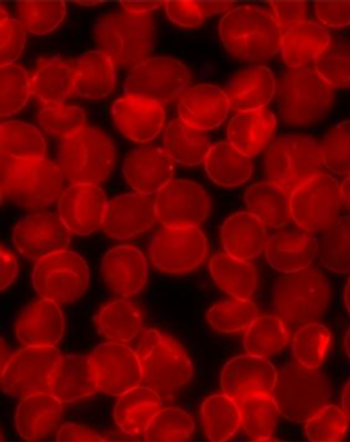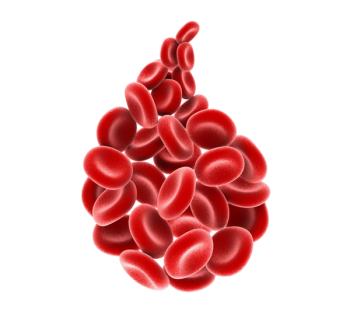
Findings from the phase 3 OCEAN trial did not confirm the clinical benefit of melphalan flufenamide as a treatment for patients with relapsed/refractory multiple myeloma.

Your AI-Trained Oncology Knowledge Connection!


Findings from the phase 3 OCEAN trial did not confirm the clinical benefit of melphalan flufenamide as a treatment for patients with relapsed/refractory multiple myeloma.

Data from the phase 1 portion of the ARROS-1 trial support the breakthrough therapy designation for NVL-520 as a treatment for those with ROS1-positive non–small cell lung cancer.

Authors of a study from the American Cancer Society estimate over 2 million new cancer cases in 2024.

ABCA12, CLIP1, and ATP13A3 somatic mutations appear to correlate with a vascular invasion phenotype in patients with poorly differentiated thyroid cancer.

Data from the phase 1/2 EPCORE NHL-1 trial support the supplemental biologics license application for epcoritamab as a treatment for patients with relapsed/refractory follicular lymphoma.

Data from the phase 3 RATIONALE 305 trial support the biologics license application for tislelizumab plus chemotherapy in advanced unresectable or metastatic gastric or gastroesophageal junction adenocarcinoma.

Findings highlight a need for individualized risk evaluation for venous thromboembolism and prophylaxis regimens for patients receiving surgery for different types of cancer.

Combining Orca-T with myeloablative BFT conditioning may improve outcomes for older patients with hematologic cancers, according to Caspian H. Oliai, MD.

Findings from 3 phase 3 trials support the marketing authorization application for tislelizumab as a treatment for patients with non–small cell lung cancer in the European Union.

Emphasizing precise terminology in clinical studies may improve the transparency and accuracy of information presented at oncology conferences.

Preliminary findings from a phase 1 trial support the breakthrough therapy designation for BAY 2927088 as a treatment for those with unresectable or metastatic non–small cell lung cancer harboring HER2 mutations.

A phase 1/2 study found that using azacitidine, venetoclax, and gilteritinib for patients with FLT3-mutated acute myeloid leukemia yielded high rates of complete response and complete response with incomplete hematologic recovery.

Diane M. Simeone, MD highlights the importance of multidisciplinary care, surgical practices, and early detection in pancreatic cancer care.

Immune engager therapies, if available, should be considered as a first treatment choice following idecabtagene vicleucel treatment in multiple myeloma, according to Murali Janakiram, MD, MS.

Findings from the phase 1/2 TRANSCEND CLL 004 trial support lisocabtagene maraleucel as a potential new treatment option for relapsed/refractory chronic lymphocytic leukemia or small lymphocytic lymphoma.

Response rates appear to be higher among patients with acute graft-versus-host disease who receive ruxolitinib compared with best available therapy in the phase 3 REACH2 trial.

The early introduction of cilta-cel in patients with relapsed/refractory multiple appears promising based on data from the phase 2 CARTITUDE-2 trial, according to Jens Hillengass, MD, PhD.

Approximately a third of patients with chronic graft-versus-host disease remain on treatment with ruxolitinib for a median of 389 days, according to findings from a retrospective study.

Large studies may be warranted to evaluate the efficacy, safety, and durability of response in patients who receive ruxolitinib plus belumosudil for graft-versus-host disease, according to the authors of a retrospective analysis.

The European Medicine Agency’s Committee for Medicinal Products for Human Use’s recommendation of approving pembrolizumab plus chemotherapy in resectable non–small cell lung cancer is based on results from the KEYNOTE-671 trial.

A phase 2 trial found that ruxolitinib cream significantly improved body surface area compared with vehicle cream in patients with cutaneous graft-vs-host disease.

More than half of the patients with relapsed/refractory B-cell lymphoma achieve a complete response with acalabrutinib plus axicabtagene ciloleucel in a phase 1/2 trial.

Data from the TRANSCEND NHL 001 trial suggest a favorable benefit/risk profile for lisocabtagene maraleucel in mantle cell lymphoma with high-risk disease features.

The AACR Health Disparities Report highlights the changes needed to achieve health equity for patients with cancer.

Investigators are currently evaluating treatment with IMM-1-104 in pancreatic cancer and other disease types associated with the RAS pathway as part of a phase 1/2a study.

Findings from a retrospective study demonstrate the feasibility of using brexucabtagene autoleucel to treat patients with relapsed/refractory B-cell acute lymphoblastic leukemia with central nervous system involvement.

Data from the phase 1/2 LINKER-MM1 trial support the biologics license application for linvoseltamab as a treatment for patients with relapsed/refractory multiple myeloma.

Robert A. Winn, MD, gives insight into how institutions and community practices can improve access to cancer care.

The FDA has set a Prescription Drug User Fee Act date of June 21, 2024 for adagrasib plus cetuximab as a treatment for patients with previously treated KRAS G12C-mutated colorectal cancer.

Results from the phase 3 LAURA trial found a statistically significant PFS benefit and a positive trend in OS with osimertinib following chemoradiotherapy in patients with stage III EGFR-mutated non–small cell lung cancer.